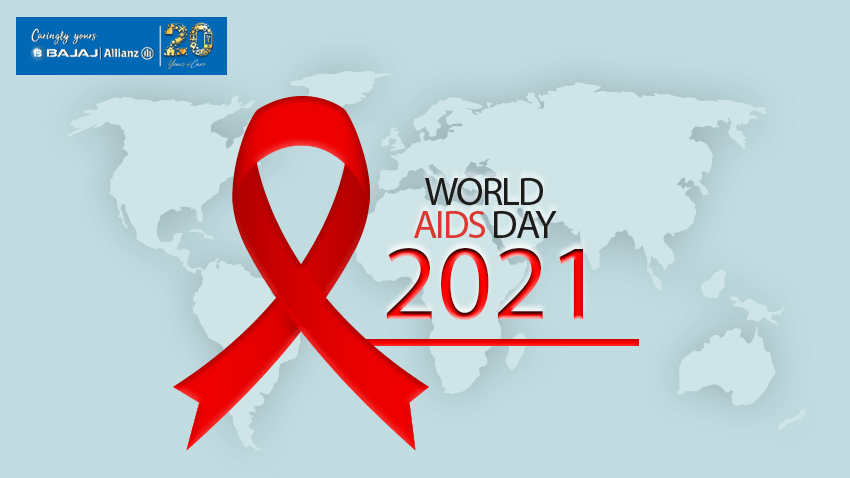World AIDS Day is observed each year on 01
st December. A day of solidarity and represents an opportunity for people across the world who are HIV-affected. A day so that they could share experiences and also remember those who are no more. This day also highlights the efforts taken on every form to end this epidemic of HIV.
An epidemic is a disease that affects a large number of people. It is within a population, community, or region. All in all, this is a day to support everyone involved in the fight against HIV. Also, to have an improved understanding of HIV as the global public health problem. Almost 40 years back, the first case of AIDS was reported. Yet, HIV still threatens the globe.
World AIDS Day Theme 2021
With about two years into the pandemic, it is time to recognize the challenges of inequities in health and access to lifesaving health services. This year, the theme focuses upon equity, inclusion, and better health for everyone affected by HIV and AIDS.
The theme for this year's World AIDS Day 2021 is
‘‘End Inequalities. End AIDS. End Pandemics’’. The key aim is to reach those who are left behind and highlight the inequalities in accessing essential HIV services.
Statistics Say!
In 2020, about 1,500,000 people were newly infected. In the same year, around 680,000 lost their lives from HIV-related causes and 37,700,000 are living with HIV.
Note: The figures have been shared by the World Health Organization.
Brief Overview: HIV/ AIDS
HIV stands for
Human Immunodeficiency Virus. It targets the immune system and weakens the defense against many of the infections that usually people with healthy immune can easily fight off.
The virus impairs the immune cells' function. The individual infected steadily become immunodeficient. The immune function is measured by the cell count CD4.
The advanced stage of HIV infection is AIDS. AIDS stands for
Acquired Immunodeficiency Syndrome. Depending on the person, it might take years to develop if not properly treated. AIDS can be defined by the development of specific cancers, infections, or some severe long-term clinical indications.
The Signs and Symptoms of HIV
The symptoms of HIV may differ depending on the infection stage. People who have HIV infected are most infectious in the initial months after being infected. Most of the time, people are unaware of the initial stage.
This is because in the initial weeks' people might experience either no symptoms or influenza symptoms. It includes headache, fever, rash, or simple sore throat.
With time, the infection weakens the immune system progressively. Signs and other symptoms are then developed. The common signs are weight loss, cough, fever, lymph nodes swollen, and diarrhea. Sometimes, if treatment is not good, it could lead to critical illnesses such as cryptococcal meningitis, tuberculosis, bacterial infections, and even cancers like Kaposi's sarcoma or lymphomas.
How is it Transmitted?
HIV can be easily transmitted through the exchange of different body fluids from the person infected like semen, blood, or vaginal secretions. HIV is also transmissible from a mother to the child while pregnancy and delivery.
It is important to understand that individuals cannot become infected via ordinary day-to-day contact such as shaking hands, hugging, or sharing any personal objects.
People who are taking ART should not transmit HIV to their partners sexually. The treatment of HIV involves taking medicines that help to reduce the HIV amount in the body. This HIV medicine is called ART that is Antiretroviral Therapy.
As of now, there is no effective cure to treat HIV, yet. It can be controlled. Most people get it under control within 06 months.
How to Prevent HIV?
Individuals can reduce the HIV infection risk by limiting exposure to the risk factors. Here is a rundown of the approach for HIV prevention:
- Use protection
- Use of antiretroviral drugs
- Voluntary medical male circumcision
- Do not get physically involved with anyone having STI such as herpes, bacterial vaginosis, syphilis, chlamydia, or gonorrhea
- Not share contaminated syringes, needles, and any injecting equipment
- Not involving unsterile piercing or cutting
Prevention is always better than cure. And it makes more sense when it has no cure.
Wrapping it Up
Let us break the social stigma and the fear. Show your support towards people living with HIV/ AIDS. Let us not just limit ourselves by wearing a red ribbon as the symbol of awareness.
Our health is the greatest wealth. It has to be the priority anything and everything should come after it. The medical inflation and healthcare costs ensure to have sufficient health insurance coverage.
You could also opt for a
critical illness cover. A critical illness cover is ideal and protects the finances in case one is diagnosed with any critical ailment.
Be Aware, Not Ignored!
 Service Chat:
Service Chat: 

